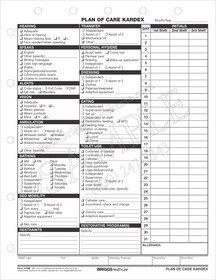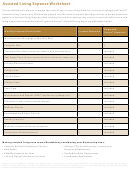Assisted Living: Simplifying Documentation with Nursing Forms
Welcome to our blog post where we discuss the significance of nursing forms in the documentation process for assisted living facilities. Assisted living communities play a vital role in providing quality care and support to individuals who need assistance with their daily activities. To streamline administrative tasks and ensure comprehensive care for residents, nursing forms have become an essential tool.
Nursing Forms – A Key Component in Assisted Living Documentation
When it comes to maintaining accurate records and ensuring efficient communication between care providers, nursing forms are indispensable. These forms cover a variety of areas, including but not limited to medication administration, vital signs monitoring, care plans, assessments, and incident reports.
 Nursing forms play a crucial role in keeping track of residents’ health conditions and any changes in their care needs. These forms provide a standardized framework for documenting and assessing residents’ health, allowing caregivers to identify and address any health concerns promptly.
Nursing forms play a crucial role in keeping track of residents’ health conditions and any changes in their care needs. These forms provide a standardized framework for documenting and assessing residents’ health, allowing caregivers to identify and address any health concerns promptly.
 Individual Service Plan – Tailored Care for Each Resident
Individual Service Plan – Tailored Care for Each Resident
Assisted living facilities aim to provide personalized care plans to meet the unique needs of each resident. The individual service plan (ISP) is a comprehensive document that outlines the specific care goals, preferences, and requirements of the resident. This plan serves as a roadmap for the care team, ensuring that all aspects of a resident’s well-being are considered.
 An ISP typically includes information related to medical history, medication schedules, dietary preferences, daily activity routines, and any necessary accommodations or modifications. By documenting these details, caregivers can provide personalized care that promotes residents’ independence, dignity, and overall well-being.
An ISP typically includes information related to medical history, medication schedules, dietary preferences, daily activity routines, and any necessary accommodations or modifications. By documenting these details, caregivers can provide personalized care that promotes residents’ independence, dignity, and overall well-being.
 Admission Forms – Ensuring Comprehensive Care from Day One
Admission Forms – Ensuring Comprehensive Care from Day One
Admission forms are an essential part of the assisted living documentation process. These forms collect crucial information about the resident, ensuring that the care team is well-informed about their medical history, allergies, emergency contacts, and any special needs or preferences. By gathering this information, caregivers can create a safe and comfortable environment for the resident from the moment they arrive.